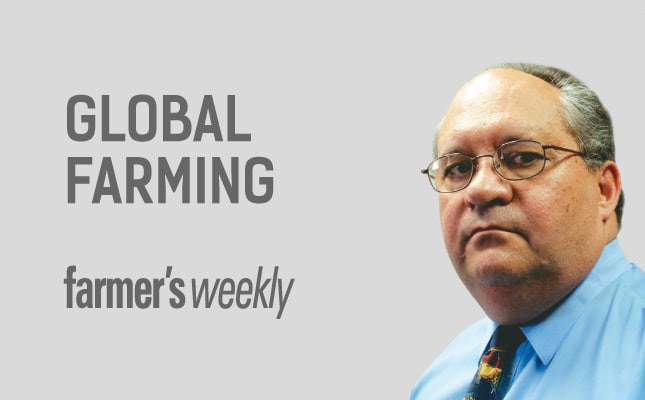
Global economic growth prospects will probably remain subdued for the next year. In South Africa, weak demand means that the economy is not producing to its full potential, while potential growth is also decreasing.
Favourable monetary policy measures such as a low interest rate can stimulate growth by creating demand – but they cannot improve the potential for growth.
According to the Reserve Bank’s Monetary Policy Review, this “requires a broader reform agenda” if we are to return to 3% growth.
A developing economy ought to invest about 25% of its GDP. In South Africa, investment has decreased since 2013. Investment is dependent on domestic and foreign savings, but household and government savings are decreasing in the country. This implies that investment can be financed only through borrowing.
However, South Africa’s debt situation complicates things. Consumer debt peaked at nearly 90% of consumers’ disposable income after the 2008 financial crisis.
Since then, consumer debt has gradually decreased to below 80% of disposable income. Consumers’ attempts to reduce debt probably played a role in this. But the main factor resulting in lower debt levels was tighter credit standards. The composition of consumer debt has changed from asset-financed debt to consumer-financing debt. In real terms, credit to households has been contracting since 2014.
Government’s debt-to-GDP ratio has doubled since 2008. Government needs to curb expenditure urgently. The threat from grading agencies to downgrade the SA economy to ‘junk status’ is a real one and it seems as if politicians are determined to let this happen; the ‘Van Rooyen finance minister for a weekend’, ‘Get Gordhan to court’ and ‘Fees must fall’ events are three recent examples of this.
Growth outlook
The SA economy shrank by 1,2% in the first quarter of 2016, with the main contributing factors being the contraction of the agricultural and mining sectors. Second-quarter growth was surprisingly strong at +3,3%.
The mining sector rebounded, adding 0,8 percentage points to growth. But this does not signify a change to positive growth. On a year-to-year basis, growth was only 0,6%.
The Reserve Bank estimates growth at 0,4% in 2016, increasing to 1,2% in 2017 and 1,6% in 2018. These marginally positive estimates are due to the expected growth in the world economy, which will see more exports, increased public investment and improving household expenditure, albeit at low rates as unemployment rises, thus cancelling the effect of wage increases.
There are risks to the growth forecast. The household sector may weaken more than expected and the external sector may not perform as predicted. Also, while world food prices are expected to remain stable, South Africans will pay more as our currency weakens further in coming months.
Agricultural outlook
Late rains could damage the chances of a good summer-grain crop in 2017, again resulting in higher grain prices. Livestock prices will increase in coming months as farmers rebuild herds. However, weaker consumer demand will limit the extent to which prices can increase without a decrease in consumption.
This is more so in the case of beef prices than in the price of lamb/ mutton. Although the consumer is under pressure and will remain so, the change in the composition of households as more and more people enter the middle class means that demand for food will continue to grow.
The sharp increase in global dairy prices may be an early indicator of higher global food prices. This means that exporters can again look forward to high prices on global markets.
Weather permitting, farmers producing for the local and export markets can probably look forward to a better year.



